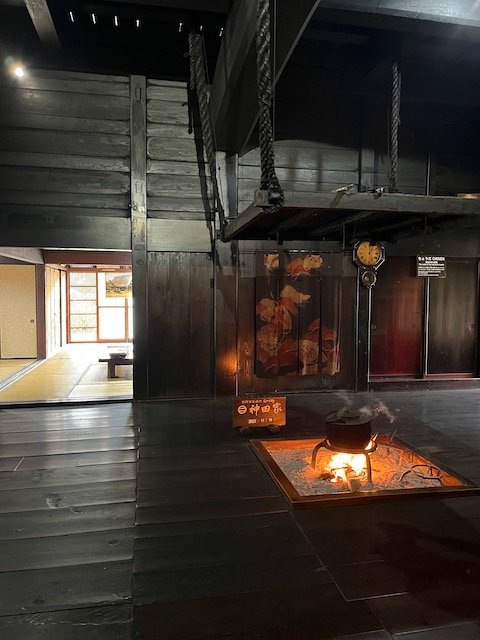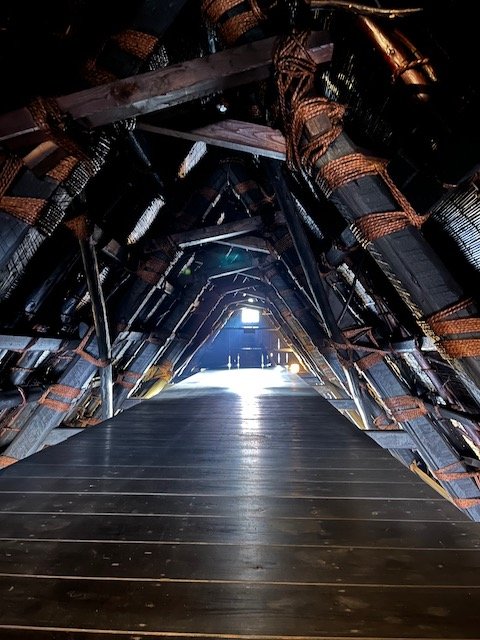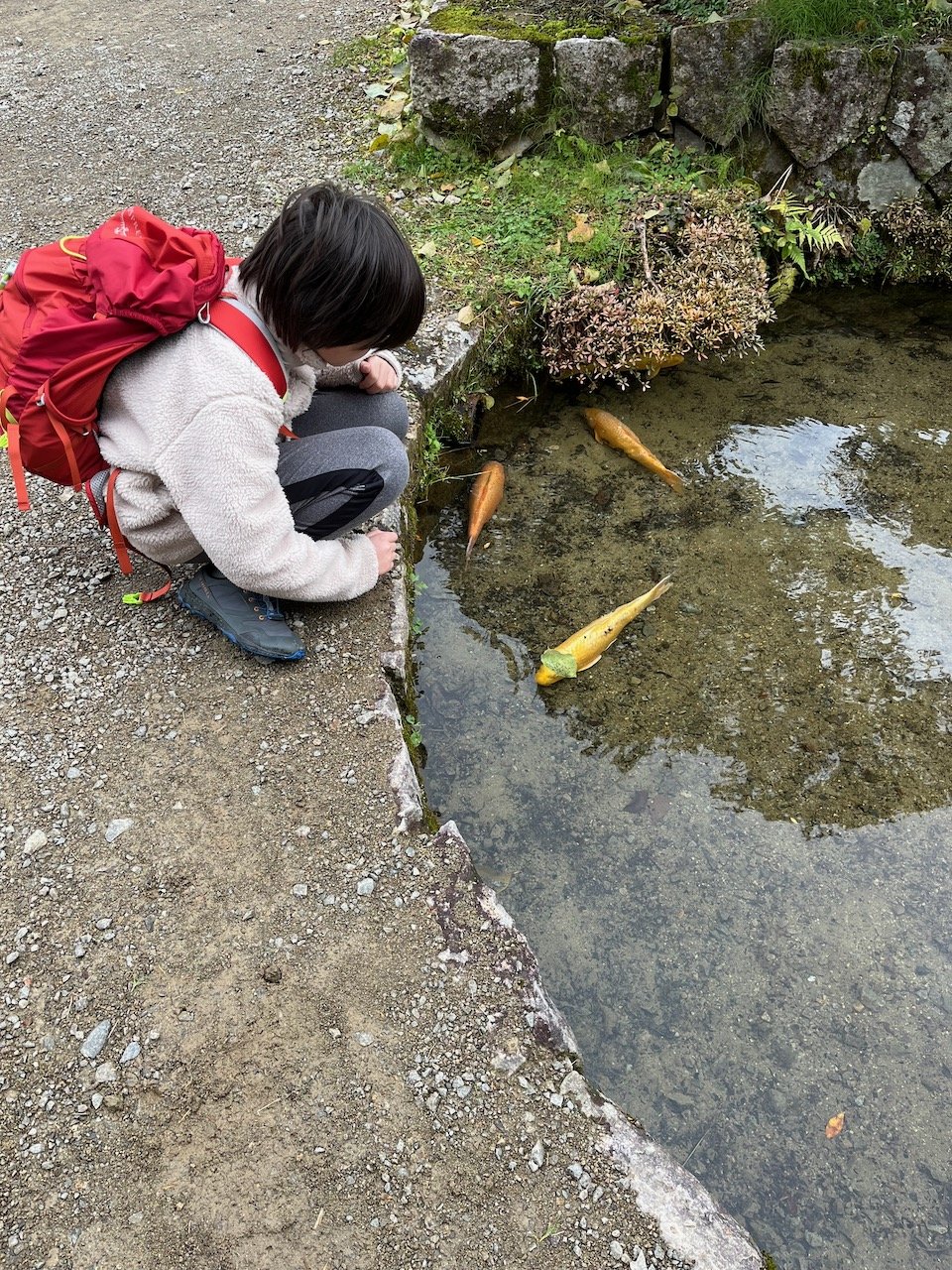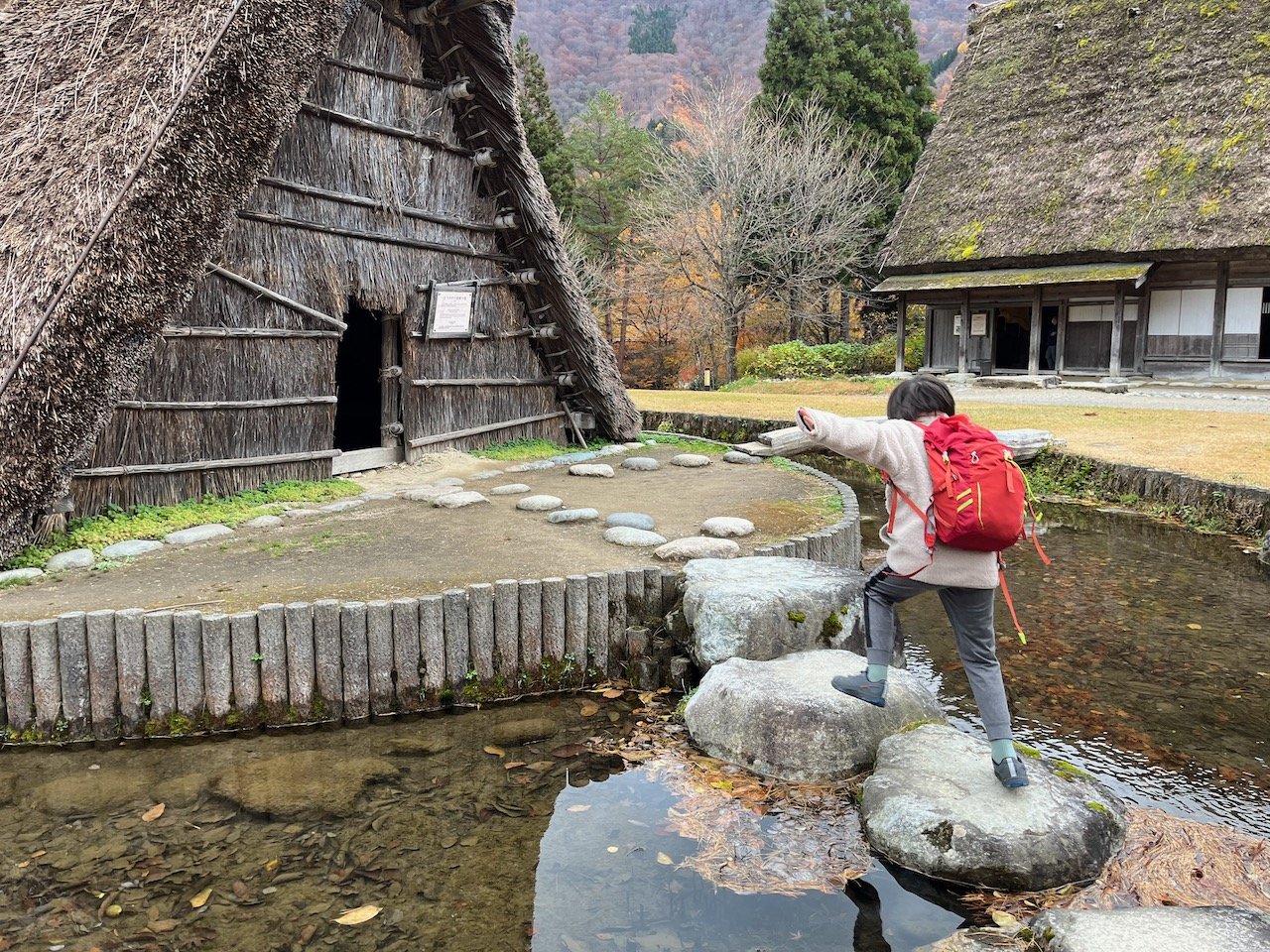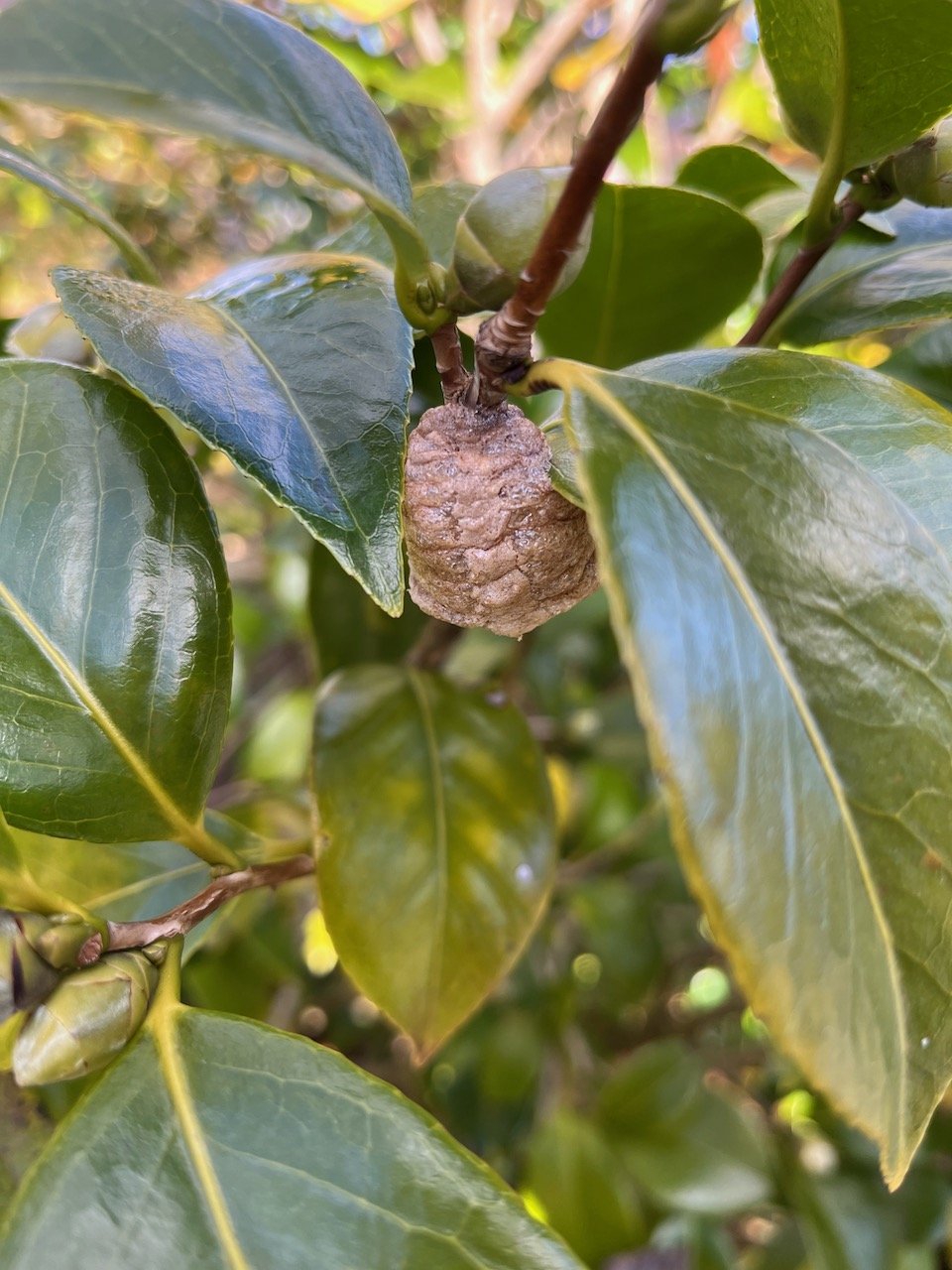Shirakawa-go, Getting into gassho houses and nature
November 2022
Shirakawa-go is a region in the mountains of Japan’s Gifu prefecture and along with Gokayama are UNESCO's World Heritage Sites. The villages here are characterized by it’s steep thatch roof houses called gassho-zukuri. The largest village Ogimachi in Shirakawa-go is the most visited. There are plenty of day visitors to this village and in the winter, the village becomes a snowy wonderland.
There are other similar smaller villages such as Ainokura and Suganuma, that are as charming but are less convenient to get to by public transportation. Many people do drive around to visit these places. The villages also offer unique overnight stays at the traditional farmhouses. These are popular so book ahead.
How we got to Shirakawa-go
From Takayama bus station, which is right next to the train station, we took the late morning Nohi limousine bus (about 50 minutes) to Shirakawa-go(Ogimachi) stop. I purchased the return bus tickets in advance when we got to the train station so I know we have seats on the bus that we want. The bus went through several mountain tunnels before dropping us off at Shirakawa-go’s small bus station.
Visiting Shirakawa-go
After stowing our luggage in the station lockers, we started the walk into the village main road. The gassho houses dot the valley and pathways wind through grassy fields and farm plots. There is a shuttle bus that will take tourists up the side of the mountain to a viewpoint that overlooks the entire village.
Some of the farm houses are open to visitors to view the interiors. You can climb up steep stairs all the way up to the top floor under the thatch roof. There is a irori -hearth fire - going inside for the smoke to help preserve the wood and thatch roof. The interiors are facsinating.
Irori
top floor of the farmhouse
Carp in the ponds around the village
Grilled beef and rice cake
Along the village paths, there are shops, souvenir stores, and eateries to stop for a break and snack or meal. Beverages are chilled by mountain water in the logs by the shops. Koi can be found swimming the path side canals and ponds. We stopped by a grilled meat stall and enjoyed Hida Beef skewers and rice cake sticks. Then had some soft serve ice cream at a store next doors.
Gasshozukuri Minakaen Open Air Museum
Walking across the river will bring you to the Gasshozukuri Minakaen Open Air Museum which is a collection of about 19 gassho-zukuri houses and other traditional structures. Pay the entrance fee and take a walk around the gardens and houses. Most of the structures are open to visit. We found a farmhouse where there were hammocks set up at the top floor and took a nice relaxing break.
Bridge over to the Open Air Museum
Hammocks at a farmhouse at the museum
We found a katydid at the museum grounds
After wandering around the Open Air Museum, we had to hurry back to the village bus terminal where our reserved hotel shuttle will take us to our accommodation for the night.
How much time to spend at Shirakawa-go?
We spent about 4 hours total at the village and Open Air museum. If you enjoy looking at Japanese traditional architecture, stop for lunch and take your time exploring the village and open air museum, you might need more time. I would recommend you have a reserved seat on the bus back to Takayama if you need to leave at a certain time in the afternoon.
Our overnight stay at Shirakawa-go at the Eco-Institute
I wanted to find a farmhouse stay in the village but they were all full. So instead, I booked a Japanese style tatami room at the Toyota Shirakawa-go Eco Institute an eco hotel and nature center a 10 minute drive away from the village up the side of the mountain and located amidst the forest. The hotel has both Western and Japanese style rooms that are family friendly (the bathrooms have child toilet seat). They provide a courtesy shuttle bus to pick you up at the village bus terminal if you do not have a car.
Toyota Shirakawa-go Eco Institute
The Toyota Shirakawa-go Eco Institute provides forest walks, summer activities for families, winter hikes and activities. I enjoyed their large onsen with indoor and outdoor baths. The hotel restaurant serves well prepared several course French cuisine in a large airy dining room. Breakfast and dinner are included and for children, child’s meals are provided. For a picky kid used to more Western fare, my son was very happy with the food.
our simple Japanese style room
The location of the hotel being in the woods means there are some local insects that might make their way inside. We did not have any problems with that in our room; we saw a house centipede (they look scary but are harmless) in the hallway, but it IS a nature center after all and my son was excited to find one. We did see signs for stink bugs and a warning on our window not to open due to a wasp nest outside.
Early morning in the mountains
We found a praying mantis egg sack
The next morning we woke up early for a guided forest walk before breakfast. The guide only speaks Japanese but he tried his best with google translate. He took us on an easy walk through the woods. He pointed out trees and mushrooms, and showed us the kind of grass that is used for making the gassho thatch roofs. There are trails around the woods that you can wander around on your own so a guide is not required. There is a gassho house around the hotel as well.
After our walk, we enjoyed our plentiful delicious Western style breakfast and requested the hotel shuttle service to bring us back to the Shirakawa-go (Ogimachi) bus terminal for our bus back to Takayama.
The Toyota Shirakawa-go Eco Institute is actually more like a mountain lodge, the decor is pleasant and simple, the staff are friendly. It was very comfortable and a great family stay for our visit to Shirakawa-go.
Travel information and links for Shirakawa-go:
Shirakawa-go tourist information
Nohi limousine bus
Gasshozukuri Minakaen Open Air Museum
Toyota Shirakawa-go Eco Institute (You can also book with Booking.com or Agoda.com)



